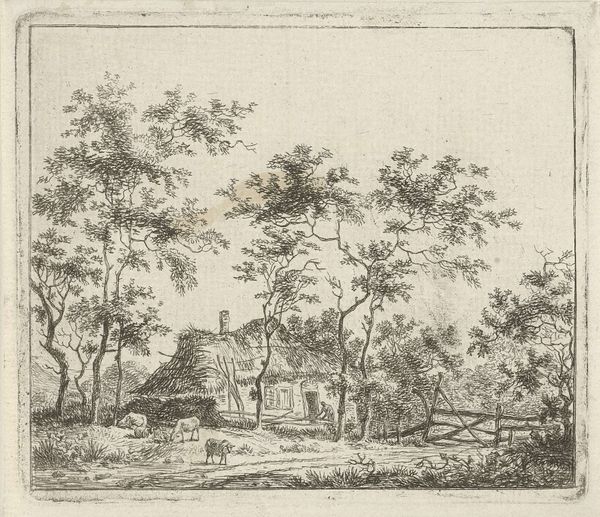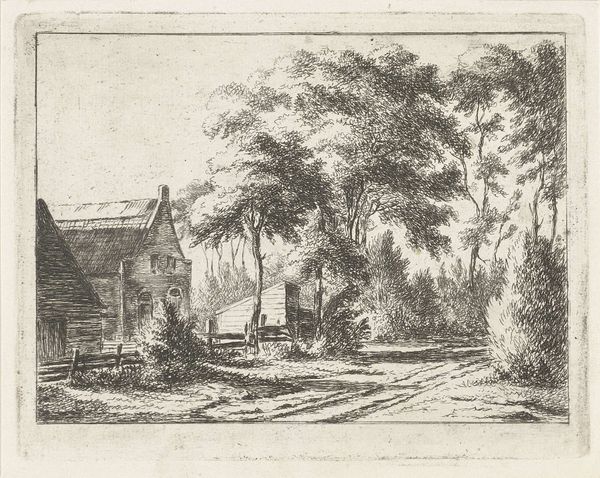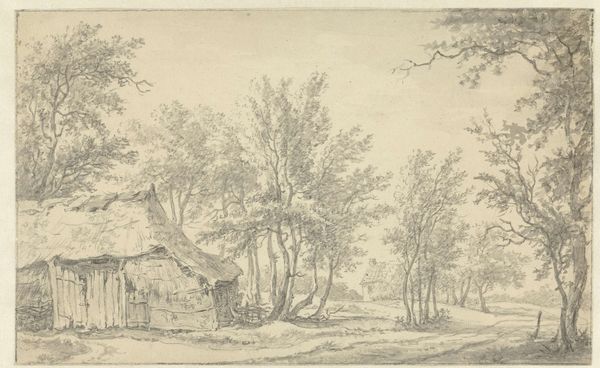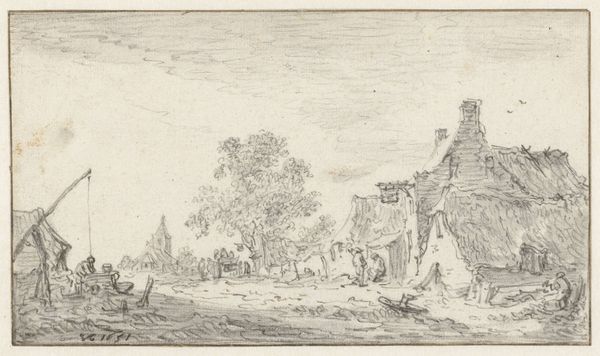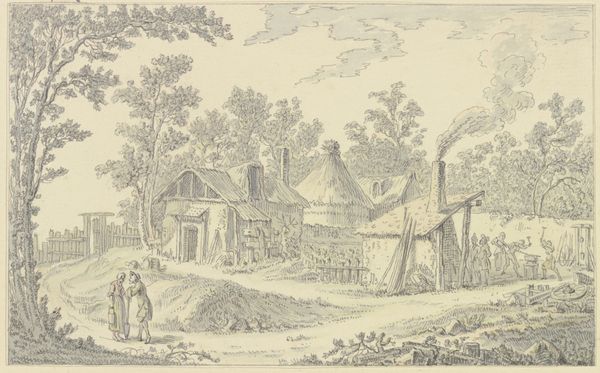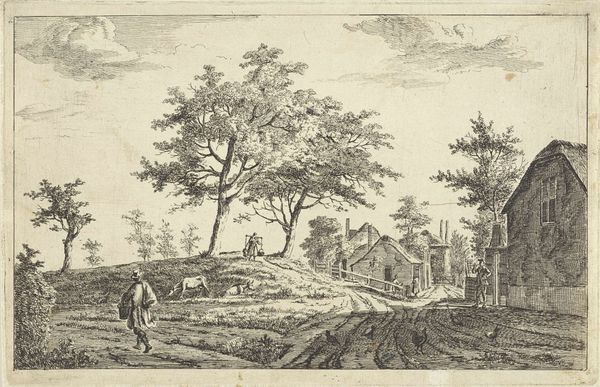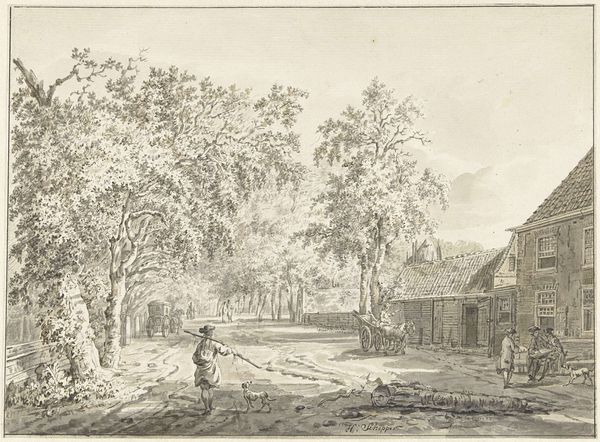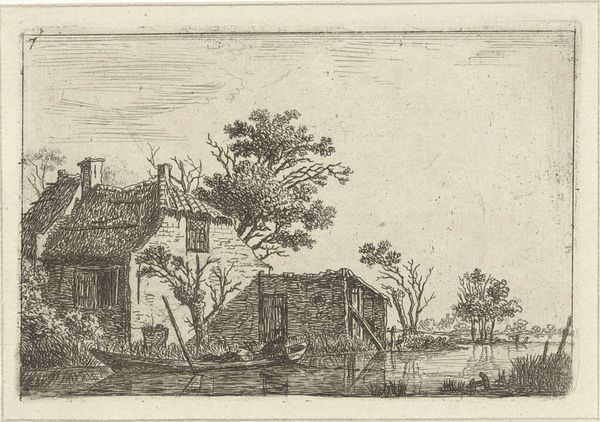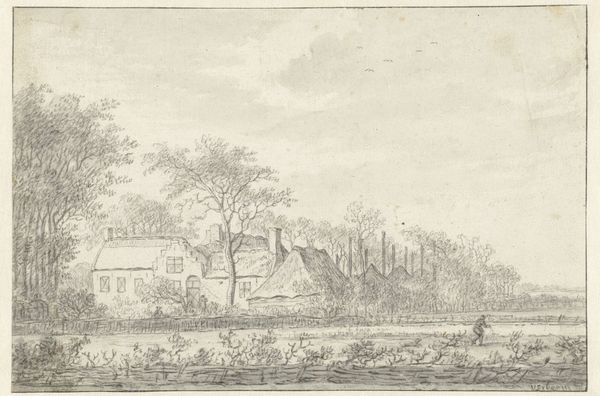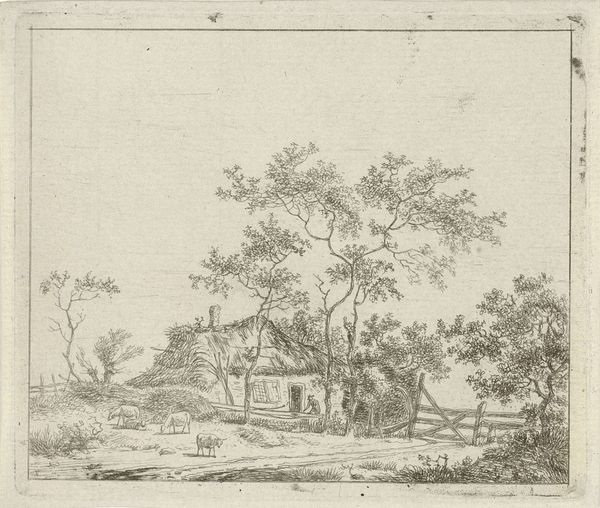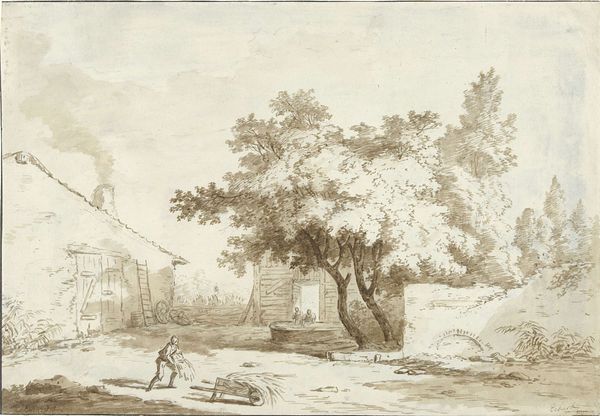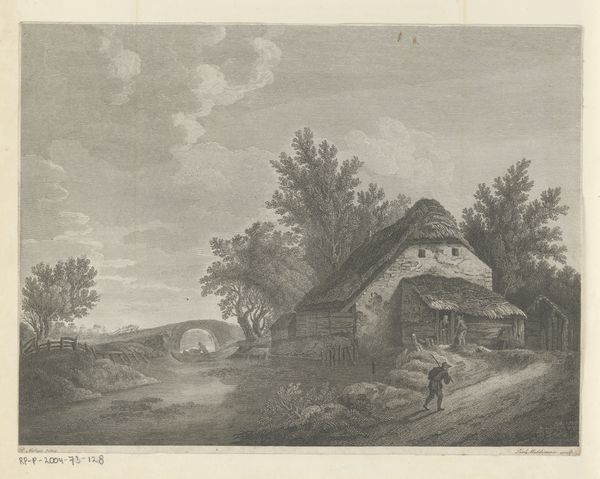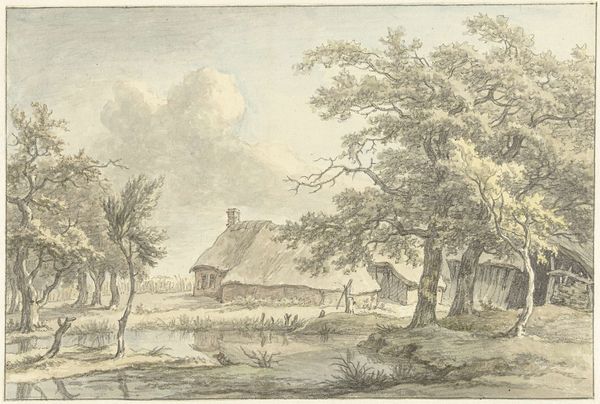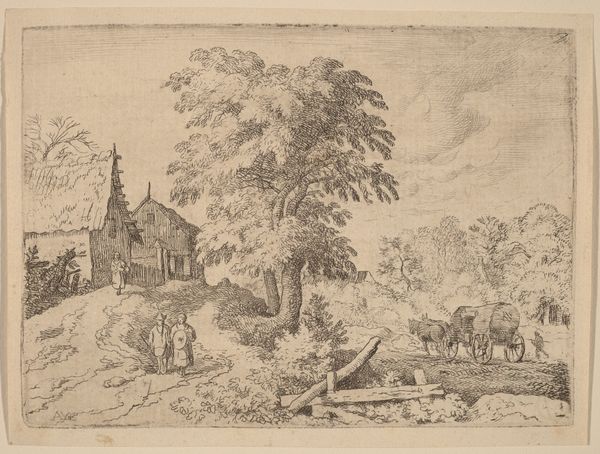
drawing, graphite
#
drawing
#
dutch-golden-age
#
landscape
#
graphite
#
realism
Dimensions: height 179 mm, width 260 mm
Copyright: Rijks Museum: Open Domain
Jacob van Ruisdael made this drawing of a farmhouse with pen and brown ink, washed with gray ink, in the Dutch Republic. Here we see a modest rural structure, nestled among trees. In the 17th century, the Dutch Republic experienced a period of economic prosperity known as the Golden Age. Alongside mercantile expansion, there was a rise in urbanization and a growing middle class. Artists like Ruisdael catered to the tastes of this new audience, producing landscapes that idealized the countryside as a source of national pride and identity. But these images were not simply records of the land. Rather, they were constructed representations that often omitted the realities of rural life, such as poverty and social inequality. As art historians, we might look into archival records, maps, and social histories to understand the complex relationship between art, ideology, and lived experience in the Dutch Golden Age.
Comments
No comments
Be the first to comment and join the conversation on the ultimate creative platform.
